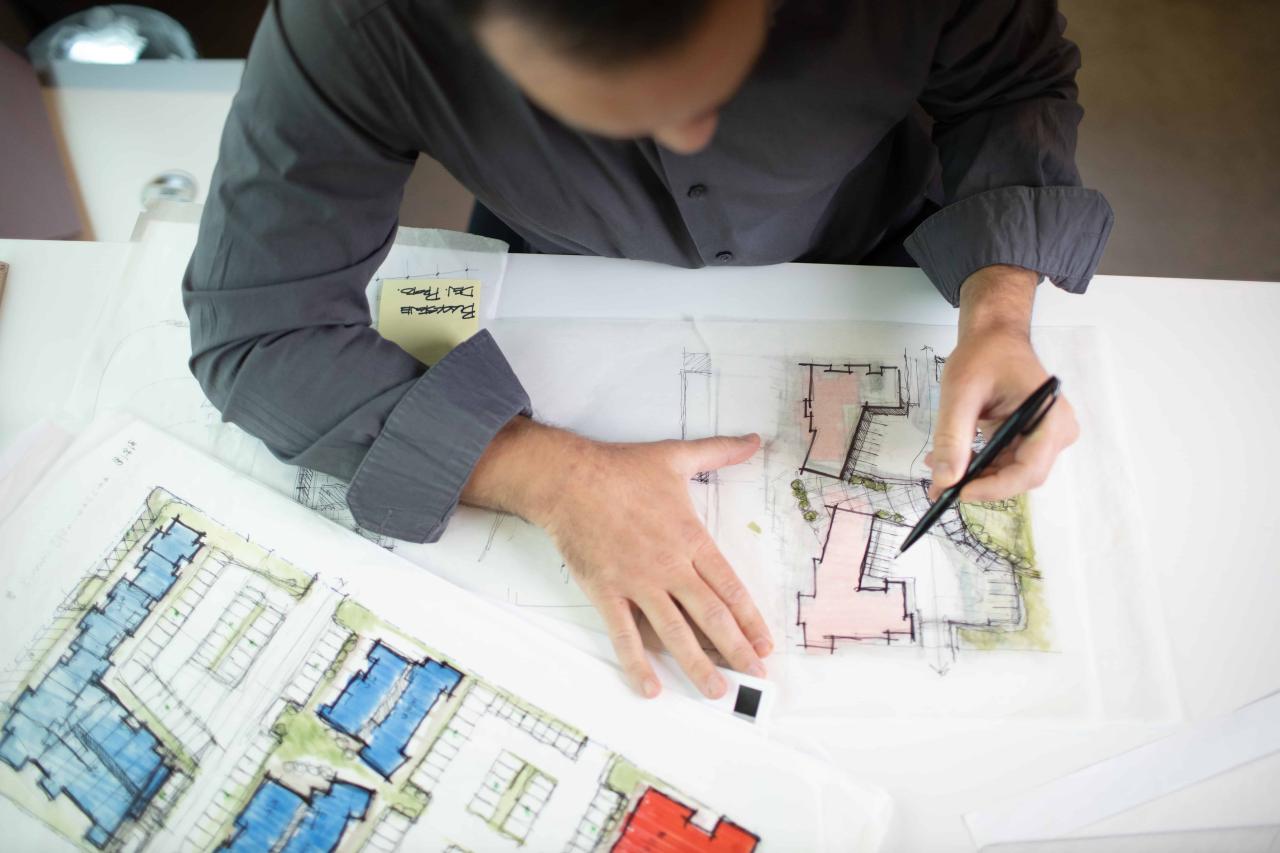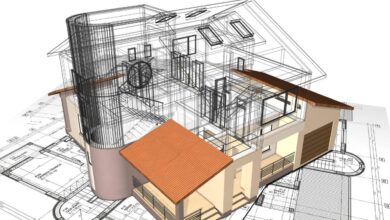Your Path to Architectural Mastery and License

The journey to becoming a fully licensed and practicing Architect is not merely a course of study; it is a profound and demanding commitment that blends artistic vision, scientific rigor, and deep social responsibility, preparing individuals to shape the very fabric of our built environment.
This professional path stands distinct from many others because it requires the mastery of an incredibly broad and complex body of knowledge, encompassing everything from structural physics and material science to urban planning regulations and contract law, demanding a unique synthesis of creativity and technical precision.
An architect is ultimately entrusted with the public’s health, safety, and welfare, designing structures—be they homes, hospitals, or schools—that must withstand the forces of nature, resist fire, and provide safe, functional, and aesthetically pleasing spaces for inhabitants over decades of use.
Consequently, the profession is rigorously guarded by a multi-stage process involving specialized education, years of supervised experience, and comprehensive licensing examinations, ensuring that only those who have demonstrated profound competence can ethically hold the title and the immense responsibility it carries.
For anyone with a passion for designing buildings, transforming communities, and creating tangible legacies that will endure for generations, understanding the precise steps, the commitment required, and the essential skills necessary to navigate this challenging but incredibly rewarding process is the first critical step toward realizing that professional dream.
The architectural license is, therefore, the final, hard-earned badge of competency, marking the transition from ambitious student to trusted master builder.
Pillar One: The Educational Foundation

The first and most critical stage on the path to licensure involves formal academic training, establishing the theoretical, technical, and historical basis for architectural practice.
1. Achieving the Professional Degree
To qualify for licensure in most jurisdictions, one must hold a professional degree in architecture accredited by a recognized national or international board.
A. Bachelor of Architecture (B.Arch)
A. This is typically a five-year program designed for students entering directly from high school.
B. The curriculum is focused on intense studio design, foundational history, and structural principles.
C. It often includes an integrated component of general education alongside professional courses.
B. Master of Architecture (M.Arch)
A. This is generally a two- to three-year program and is the most common path for those who hold a prior bachelor’s degree in a non-architectural field or a pre-professional architectural degree.
B. The curriculum is highly intensive, focusing heavily on advanced design studios, building technology, and theoretical exploration.
C. It provides a highly focused, condensed route to the professional degree requirement.
C. Essential Coursework Mastery
A. Design Studios are the core of the curriculum, where students learn to develop projects from conceptual ideas to detailed schematics.
B. Building Technology classes cover structural systems, HVAC (heating, ventilation, and air conditioning), and lighting design.
C. Architectural History and Theory courses provide essential context, exploring how design has evolved across different cultures and eras.
D. Practice Management courses introduce students to the legal, financial, and ethical responsibilities of running an architectural firm.
2. Beyond the Drawing Board: Supplemental Skills
The complexity of modern practice demands competencies that extend far beyond traditional drafting and design.
A. Digital Fluency
A. BIM (Building Information Modeling) proficiency is mandatory, using tools like Revit or ArchiCAD to manage complex, data-rich models.
B. Mastery of CAD (Computer-Aided Design) remains essential for technical drawing and detailing.
C. Skills in Parametric Design (e.g., Grasshopper/Rhino) allow architects to explore complex, optimized, non-standard forms.
B. Communication and Presentation
A. Effective visual communication is crucial for selling a design vision to clients and stakeholders.
B. Strong written and verbal communication skills are necessary for negotiating contracts and managing construction administration.
C. The ability to articulate and defend design choices coherently is constantly tested in professional practice.
Pillar Two: The Experience Requirement (Internship)
A degree provides the theoretical knowledge, but real-world experience, typically referred to as an internship or Architectural Experience Program (AXP), is essential for bridging the gap between academia and professional practice.
1. The Value of Supervised Practice
The internship phase ensures that candidates acquire practical experience in all facets of the architectural process under the direct supervision of a licensed architect.
A. Learning by Doing
A. Candidates gain direct, hands-on experience in areas like construction documentation (CD sets), code compliance, and material specification.
B. They learn the often-unpredictable realities of the construction site, managing logistics, budgeting, and quality control.
C. This practical exposure builds confidence and competence in applying theoretical knowledge.
B. The Experience Categories
A. The AXP program typically requires logging hours across specific areas of practice, ensuring a well-rounded professional profile.
B. These areas include Project Management, Practice Management, Construction and Evaluation, and Project Planning/Design.
C. Tracking hours across diverse projects is crucial for meeting the total experience time required for examination eligibility.
C. Mentorship and Feedback
A. Working under a licensed mentor provides invaluable guidance, constructive criticism, and professional networking opportunities.
B. Mentors are responsible for verifying the quality and duration of the candidate’s experience.
C. This mentorship structure instills the high ethical standards and professional judgment necessary for autonomous practice.
2. Essential Skills Gained During Internship
The internship period is where abstract concepts are tested against real-world constraints.
A. Code Compliance and Zoning
A. Learning how to navigate complex and often frustrating building codes, accessibility standards (ADA), and zoning ordinances is a daily task.
B. Understanding these regulatory frameworks ensures designs are legal, safe, and viable for permitting.
B. Construction Administration (CA)
A. The intern learns to manage the CA phase, reviewing shop drawings, responding to RFI (Requests for Information), and conducting site visits.
B. This phase involves acting as the client’s representative to ensure the building is constructed accurately according to the contract documents.
C. Financial and Risk Management
A. Gaining exposure to project budgeting, cost estimation, and scheduling reveals the economic realities that shape every design decision.
B. Understanding the architect’s legal liability and professional responsibility is vital for future practice management.
Pillar Three: The Licensing Examination

The final major hurdle is the Architect Registration Examination (ARE), a comprehensive, multi-division test designed to assess whether the candidate possesses the knowledge and skills necessary to protect the public health, safety, and welfare.
1. Structure of the Examination
The ARE is a rigorous assessment covering all aspects of architectural practice, from pre-design to construction administration and firm management.
A. Comprehensive Coverage
A. The exam is divided into multiple divisions, each focusing on a different phase of the architectural process.
B. Topics include Practice Management, Project Management, Programming and Analysis, Project Planning and Design, Project Development and Documentation, and Construction and Evaluation.
C. Candidates must pass all divisions, usually over a multi-year period, to qualify for licensure.
B. Testing Professional Competence
A. The examination moves beyond simple recall of facts, focusing heavily on applying professional judgment to realistic, complex scenarios.
B. Questions test the candidate’s ability to integrate knowledge across multiple domains, such as balancing structural stability with fire safety requirements.
C. The format includes multiple-choice questions, quantitative calculations, and graphic problem-solving (case studies).
2. Strategies for Success
Passing the ARE requires disciplined study, strategic planning, and mental resilience.
A. Strategic Scheduling
A. Candidates should strategically schedule divisions to leverage their most recent professional experience or academic knowledge first.
B. Taking divisions in an order that builds upon prior knowledge can create a more coherent study flow.
B. Utilizing Diverse Resources
A. Relying on a variety of study materials, including official guidelines, practice exams, professional seminars, and study groups, is essential.
B. Focusing on areas of professional weakness, particularly legal and financial aspects often underemphasized in school, is critical.
C. Mental Endurance
A. The process is lengthy and challenging, requiring mental discipline and perseverance to overcome potential setbacks from failed divisions.
B. Maintaining a work-life balance during the study period is important to prevent burnout and maintain long-term focus.
Pillar Four: Licensure and Professional Responsibilities
Upon successfully passing the ARE and meeting all education and experience requirements, the candidate can apply for an architectural license in their jurisdiction.
1. The Power of the License
The architectural license is a legal grant of authority and a badge of trust.
A. Legal Authority
A. The license grants the legal right to use the title “Architect” and to independently submit construction documents for public approval.
B. It carries the legal authority to direct and oversee the professional services of others in the design and construction process.
C. This legal standing ensures that all designs meet mandated safety standards enforced by the jurisdiction.
B. Continuing Education
A. Maintaining the license requires ongoing Continuing Education (CE) credits throughout one’s career.
B. CE ensures that architects stay current with the latest advancements in technology, building codes, material science, and safety regulations.
2. Ethical and Social Responsibility
The licensed architect holds an inherent duty to the public that transcends the interests of the client.
A. Public Health, Safety, and Welfare (HSW)
A. The architect’s primary ethical responsibility is to protect the HSW of the public through structurally sound, fire-safe, and functional design.
B. This obligation often requires the architect to advise the client against decisions that might compromise safety or code compliance.
B. Environmental Stewardship
A. Modern architectural ethics mandate a responsibility toward environmental sustainability and energy conservation.
B. Architects are increasingly expected to guide clients toward green building solutions and minimize the environmental footprint of their projects.
Conclusion
The journey to architectural licensure is an ambitious and heavily regulated marathon.
It begins with obtaining an accredited professional degree that establishes the theoretical and technical foundation.
It demands years of supervised, practical experience to master the realities of construction, codes, and project management.
It culminates in the rigorous Architect Registration Examination, testing professional judgment and competency.
The resulting license grants the legal authority and the ethical responsibility to protect public health, safety, and welfare.
The ultimate reward is the privilege of shaping communities and leaving behind a tangible, enduring legacy in the built world.




